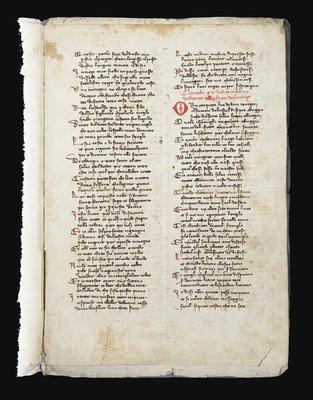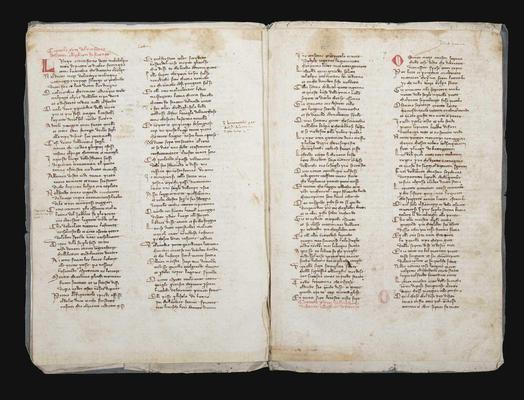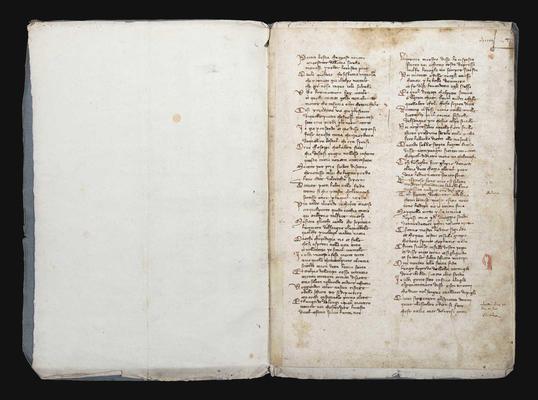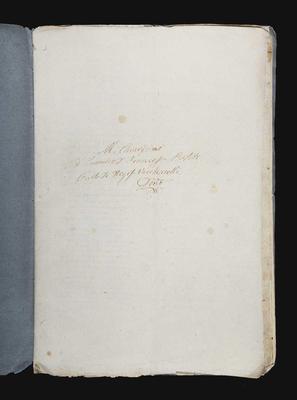Dante Alighieri
Commedia. Inferno, XII 19 - XXIII 114.
Fragment on paper. Florence, third quarter of the fourteenth century.390x280 mm.i+8+ileaves. fragment on paper. Collation: one quire of eight leaves. Text block: 320x210 mm, two columns, 45 lines. Unruled. Text written in dark brown ink in a Florentine chancery hand. Vernacular rubrics prefacing the cantos written in red. Three-line initials in red penwork at the beginning of each canto, probably by the same scribe who copied the text. The first capital letter of each terzina set out and touched with red. Mounted on vellum strips from a Latin manuscript in semi-gothic hand. Bound in late eighteenth-century blue wrappers. The lower inner margins of fols. 3v and 6r are reinforced. Lightly waterstained at the upper margin. A few notes in a fourteenth-century chancery; other annotations by fifteenth- and sixteenth-century hands.
Provenance: Carlo de Negis Vecchiarelli (late eighteenth century; he ran a school in Matelica, near Macerata in the Marche); gifted by him to Francesco Rutoli (‘Al Chiarissimo Sig. Canonico D. Francesco Rutoli Carlo de Negis Vecchiarelli Dono'); Livio Ambrogio collection (in accordance with the Italian Code of the Cultural andLandscape Heritage (2004) the manuscript is declared an item of ‘cultural interest' for the Italian State).
A substantial portion of the Inferno, from a manuscript written in an elegant Florentinecancelleresca, belonging to the renowned group of manuscripts known as the Dante delCento, a series produced in Florence which was standardised in layout, script and style of decoration. This large fragment includes eleven cantos: among them, the famous Canto xiii, with the description of the Forest of the Suicides and the striking story of Pier delle Vigne; Cantoxv, with the moving encounter between Dante and his old teacher Brunetto Latini; Cantoxix, devoted to the Simoniacs punished in the Third Bolgia and introduced by Dante's celebrated invective against Simon Magus.
The paleographic examination of the fragment reveals that the skilled scribe who was responsible is the same as the one who copied three well-known manuscripts: the famous ms2137 in the Biblioteca Riccardiana (in the past wrongly ascribed to Boccaccio),ms Frullani 7 in the Biblioteca Moreniana in Florence, andmsBorg. Lat. 168 in the BibliotecaApostolica Vaticana. An important piece of evidence of the high demand for copies of this poetic masterpiecein Dante's native city during the 1370s.





